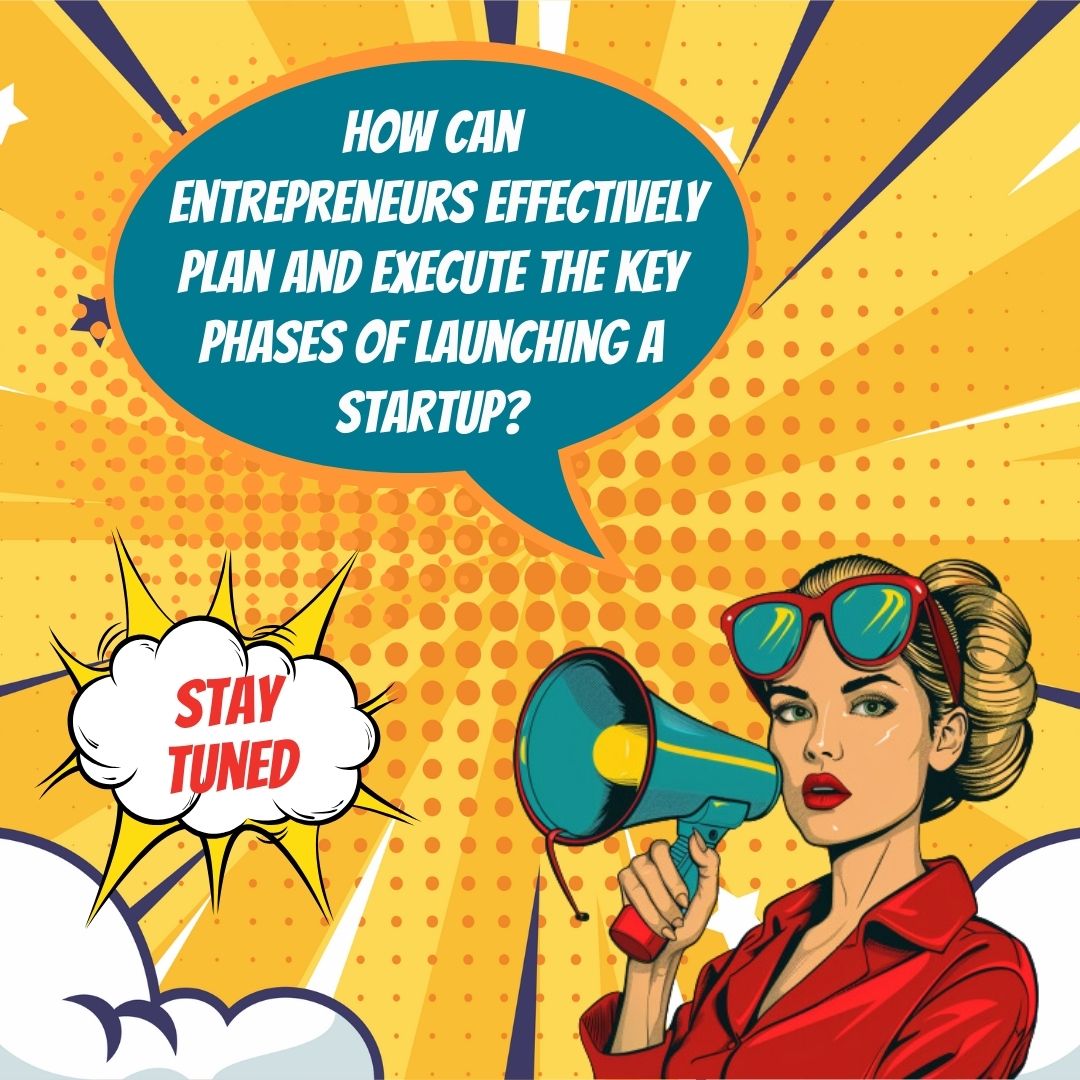Key Takeaways
✅ Validate Your Idea and Conduct Market Research: Validate your startup concept by engaging with potential users and industry experts. Use surveys, interviews, or an MVP to test your idea, identify market gaps, and inform product development and marketing strategies.
✅ Develop a Solid Business Plan and Communication Strategy: Create a well-defined business plan outlining your mission, vision, objectives, and strategies, backed by market research. Ensure strong communication and PR efforts to gain market visibility.
✅ Prototype and Refine Your Idea: Test your product on a small scale by creating a prototype or MVP. Use feedback to refine the idea, addressing potential issues early to meet target audience expectations.

Introduction
How do you turn a brilliant idea into a thriving business? "From Idea to Reality: A Step-by-Step Guide to Launching Your Startup" provides the answer. Validating your idea, creating a comprehensive business plan, and rigorous product development and prototyping are crucial steps in this journey. This guide delves into each phase, offering modern trends and innovative techniques to maximize your startup’s revenue and return on investment (ROI). Read on to uncover actionable insights that can transform your entrepreneurial dreams into reality.
Top Statistics
| Statistic | Insight |
|---|---|
| Growing Demand for Tech Skills and Solutions: The demand for tech skills and solutions continues to grow, making launching a tech startup a promising business venture. | Tech skills and solutions are central to modern industry needs, indicating a ripe market for tech startups aiming to innovate and solve real-world problems. |
| Target Audience Understanding: Thorough market research helps in understanding the target audience intimately by keeping the pulse on their pain points and preferences. | Knowing your audience's pain points and preferences can guide product development and marketing strategies, significantly boosting chances of success. |
| Startup Success Rate: With the right approach, determination, and strategy, startups can overcome challenges and become thriving businesses. | Adopting a strategic and persistent mindset is crucial for startups to navigate early-stage hurdles and achieve long-term success. |
| Idea Validation: Validating an idea through methods like surveys, interviews, or a minimal viable product (MVP) is crucial for gauging market response and attracting investors. | Idea validation helps ensure that there is real demand for the product, which is vital for securing investor confidence and market traction. |
| Business Planning: A robust business plan provides clarity, direction, and a reference point for every major decision, including financial projections, potential risks, and marketing strategies. | A comprehensive business plan serves as a roadmap, offering insights into financial health and guiding strategic decisions. |
Idea Generation and Validation
Generating and validating your startup idea is the first crucial step. Identify a problem worth solving and brainstorm potential solutions. Validate your idea through market research, customer feedback, and competitive analysis. According to a report by CB Insights, 42% of startups fail because there’s no market need for their product. Therefore, understanding your market's needs and ensuring there is a demand for your solution is indispensable.
Building a Strong Foundation: Business Planning and Team Assembly
Creating a strong business plan is essential. Clearly define your mission and vision to align your team's efforts. Assemble a talented and committed team and establish a robust company culture. A study by Harvard Business Review states that 64% of startup employees believe that company culture directly affects company success. Without a united front, your startup may face unnecessary hurdles.
Product Development and Prototyping
Developing your product starts with a minimum viable product (MVP) to test your idea's feasibility. Use agile development methodologies to remain flexible and responsive. Collect regular user feedback to make necessary adjustments. Gartner reports that adopting agile techniques can result in a 30% improvement in team productivity. Continuous iteration ensures your product meets user expectations and stands out in the market.

Securing Funding and Resources
Securing financial resources can be challenging but is fundamental for growth. Explore options like bootstrapping, crowdfunding, venture capital, and angel investors. Effective budgeting and financial planning are critical for resource allocation. According to Fundera, only 0.05% of seed-funded startups become unicorns, emphasizing the importance of managing funds wisely to sustain and scale.
Launch Preparation and Marketing Strategy
Preparing for your launch involves developing a comprehensive marketing strategy. Create a detailed launch plan and generate pre-launch hype. Solidify your branding, positioning, and messaging to make a memorable first impression. A survey by HubSpot found that 70% of marketers are actively investing in content marketing, which highlights the importance of a well-crafted strategy to attract and retain customers.
Launch and Post-Launch Evaluation
During launch, be prepared to iterate, adapt, and continuously improve based on feedback. Evaluate the success of your launch through performance metrics and data-driven decisions. Post-launch, gather extensive feedback and use it to drive growth and scalability. According to the Lean Startup methodology, startups should pivot or persevere based on learned insights, ensuring they remain on the trajectory toward sustainable success.

AI Marketing Engineers Recommendation
Recommendation 1: Leverage Market Research: Conduct thorough market research before launching your startup. According to a 2022 survey by CB Insights, 42% of startups fail due to a lack of market need. Utilize platforms like Statista and Google Trends to understand market demand and consumer behavior. By analyzing this data, you can refine your product or service to better meet the needs of your target audience, increasing your chances of success.
Recommendation 2: Utilize Social Media Analytics: Integrated social media campaigns can propel your startup to new heights. Current trends indicate that businesses using data-driven social media strategies achieve up to 37% more sales leads than those that do not, as reported by the Hootsuite 2023 Social Trends Survey. Tools like Hootsuite and Sprout Social provide in-depth analytics allowing startups to track engagement, measure ROI, and fine-tune their approach. By consistently analyzing and adapting to these insights, your startup can maintain relevancy and drive growth.
Recommendation 3: Apply Lean Startup Methodologies: Implement Lean Startup methodologies to streamline your launch process. This approach, emphasized by Eric Ries in his influential book, advocates for building a Minimum Viable Product (MVP) to test hypotheses rapidly. According to Fundable, 90% of successful startups relied on an MVP to fine-tune their final product through customer feedback. Tools like Trello and Asana can help manage this iterative process, ensuring efficient product development and faster go-to-market times. This method not only reduces waste but also aligns your startup more closely with customer needs.
Relevant Links
- Revolutionize Your Digital Marketing with AI
- Key Factors for Setting Impactful Campaign Goals
- Master Campaign Reach and Audience Size for Market Penetration
- Enhancing Consumer Insights through User Behavior Analysis
Conclusion
In essence, "From Idea to Reality: A Step-by-Step Guide to Launching Your Startup" offers a comprehensive and actionable roadmap for aspiring entrepreneurs. By emphasizing the importance of idea generation and validation, the guide helps you ensure that your concept has real-world viability. Building a solid foundation through thoughtful business planning and team assembly sets the stage for sustained success. The focus on product development and prototyping underscores the necessity of refining your product based on user feedback.
Securing funding and resources is crucial, and exploring various options can make or break your startup. As you gear up for launch, a well-crafted marketing strategy and thorough preparation are indispensable. Finally, the launch itself is just the beginning—continuous evaluation and adaptation are key to driving growth.
This guide is not just a checklist but a dynamic process that encourages iteration and learning. It equips you with the knowledge to turn a mere idea into a thriving startup. Ready to take the plunge and transform your vision into reality? Let this step-by-step guide be your compass on the entrepreneurial journey.

FAQs
Question 1: What are the essential elements to validate when launching a startup?
Answer: Identify the target audience and their perception of the problem. Determine the monetary value of the problem to potential customers. Assess the size of the potential market for the solution.
Question 2: How do you ensure the success of a startup?
Answer: Validate the idea by understanding the target audience, the problem's value, and market size. Develop a strategic plan, manage market trends, and understand the needs of the target audience.
Question 3: What are the key steps to move a business idea from concept to reality?
Answer: Put the idea in writing, focusing on "what if" questions. Create a roadmap from idea to execution. Conduct a SWOT analysis. Communicate with the team. Develop a business plan. Launch the product or service.
Question 4: What is the "tyranny of choice" in the context of startups?
Answer: The multitude of options available to customers and investors, making it crucial to stand out with a unique solution and clear strategy.
Question 5: How do you differentiate your startup from existing solutions?
Answer: Identify what sets your solution apart, whether it's a unique idea, functionality, communication, or methodology.
Question 6: What are the key considerations for scaling a startup?
Answer: Determine if the idea is suited for bootstrapping or venture funding. Decide on the type of business model (lifestyle or "grow big fast"). Consider the marketing approach (high-touch or low-touch).
Question 7: How do you measure and verify your startup idea?
Answer: Engage with potential customers to understand their needs and pain points. Conduct surveys, interviews, or focus groups to gather feedback. Create a prototype to test the idea and gather feedback.
Question 8: What resources are essential for a startup?
Answer: Identify available resources and support in the local ecosystem. Consider the skills and expertise needed within the team (development, design, sales, etc.).
Question 9: How do you stay flexible and adaptable during the startup process?
Answer: Be open to feedback and willing to pivot based on the outcomes of experiments. Continuously refine the idea and business plan based on new insights.








